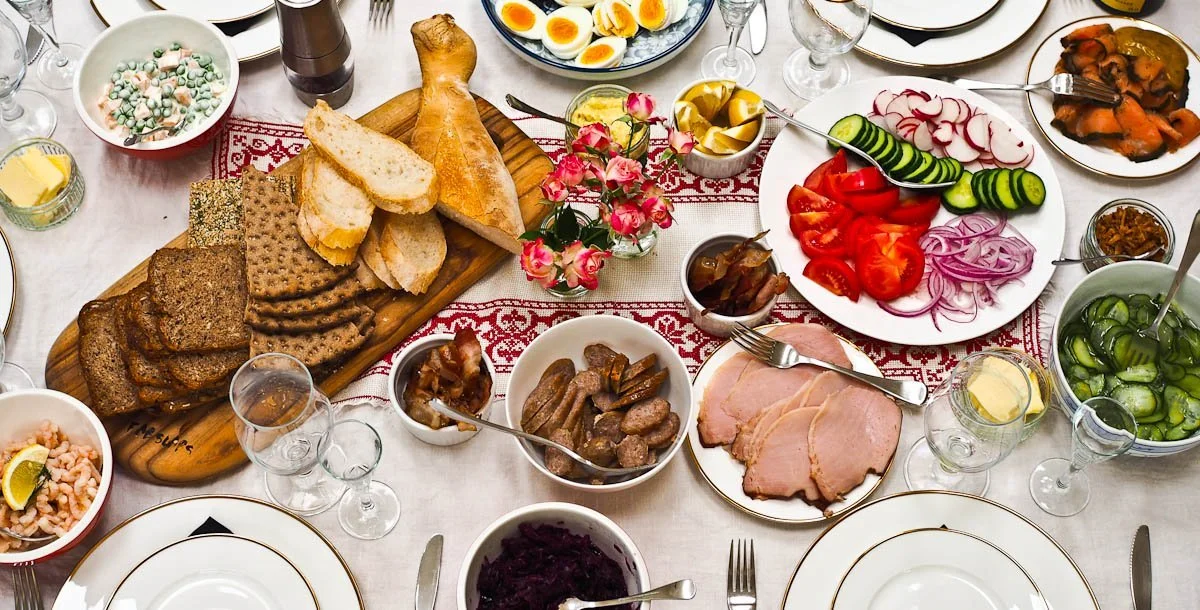Take Me to The Recipes!
Denmark, a country steeped in rich history and surrounded by picturesque landscapes, boasts a culinary scene that reflects its unique heritage. Nestled in Northern Europe, Denmark is known for its temperate climate, diverse geography, and a population that embraces Danish Food culinary traditions with pride.
As we delve into the heart of Danish cuisine, we’ll uncover the history, influences, and flavors that make it a culinary gem.
Danish Food – Key Takeaways
- Danish cuisine is characterized by simplicity, freshness, and a strong emphasis on locally sourced ingredients.
- Traditional Danish Food dishes often feature seafood, pork, and dairy products.
- The country’s history, climate, and geography have significantly influenced its culinary traditions.
- Danish cuisine reflects a balance between indulgence and health-consciousness.
- National dishes like smørrebrød showcase the Danish love for open-faced sandwiches.
- Ingredients like pickled herring, rye bread, and potatoes are staples in Danish kitchens.
- Explore a variety of Danish recipes to bring the authentic taste of Denmark into your home.
Take Me to The Recipes!
You may also Enjoy the Following Articles
- Thai Cuisine: A Culinary Journey Through Thailand’s Rich Flavors
- North and South American Cuisine – A Culinary Expedition
- European Cuisine: Savor the Continent’s Best Culinary Secrets!
- African Cuisine: Discover the Bold Flavors & Global Charm!
- Asian Cuisine Unlock its Secrets – Taste, Health & Global Influence!
- Oceania Cooking: A Culinary Journey Through the Pacific
Where is Denmark?


Index of Contents
- Take Me to The Recipes!
- What is typical Danish food?
- The New Nordic Cuisine trend
- Danish Food Recipes – Great Examples to Try at Home
- Danish National Dish – Stegt Flæsk med Persillesovs
- What is the Best Danish Food?
- Denmark’s History and Its Impact on the Cuisine
- How Denmark’s Climate and Geography Has Influenced Danish Cuisine
- Understanding the Essence of Danish Cuisine
- Danish Culinary Traditions
- What Are the Health Implications of Danish Cuisine?
- Exploring Danish Ingredients: The Flavors of Danish Cuisine
- Conclusion
- Frequently Asked Questions
The following delicious Danish recipes are included in this article. Click on the recipe that excites your taste buds!
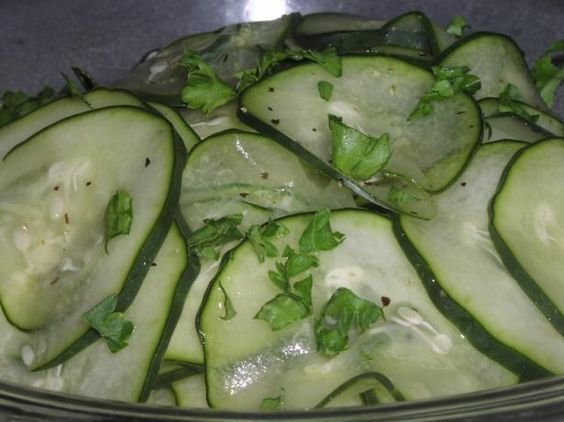


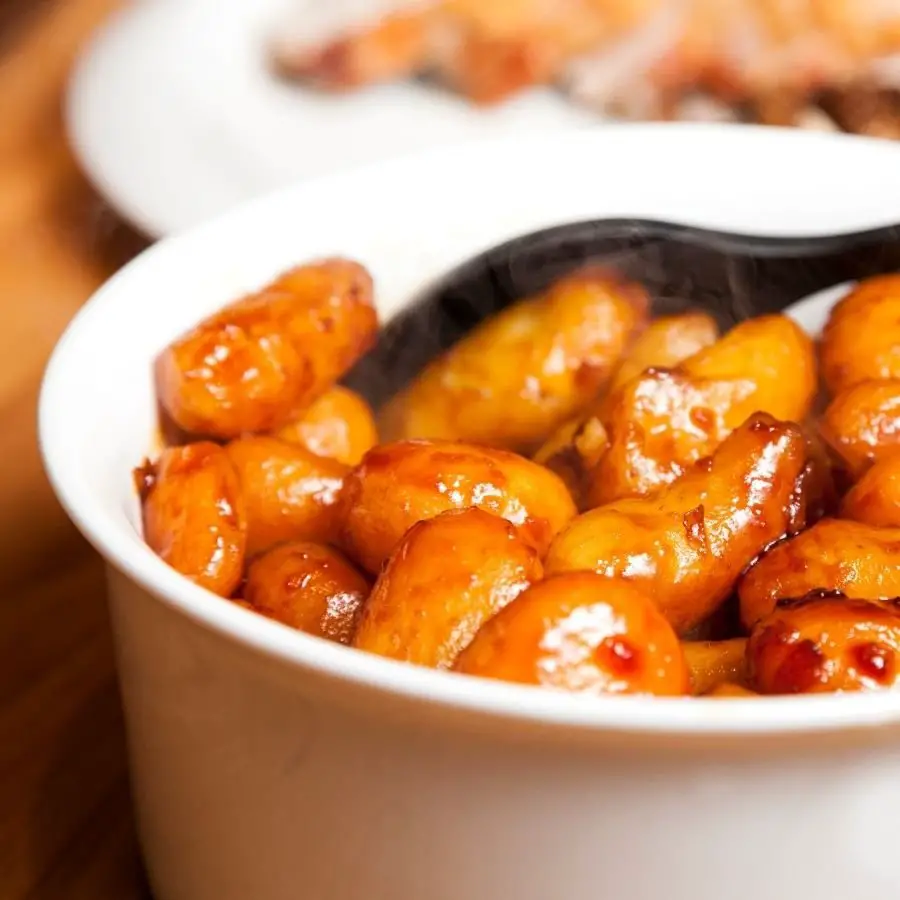
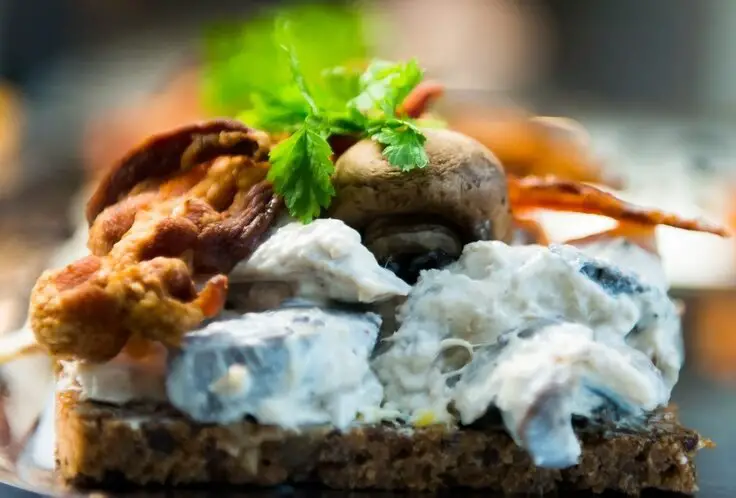
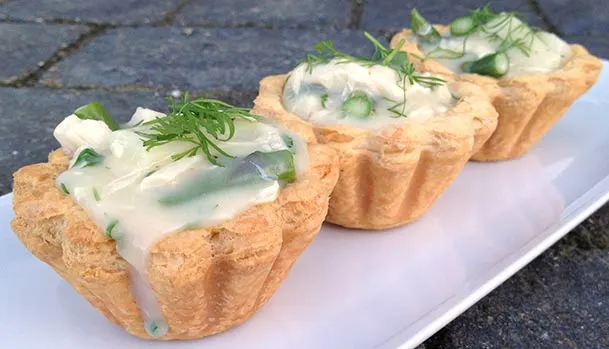
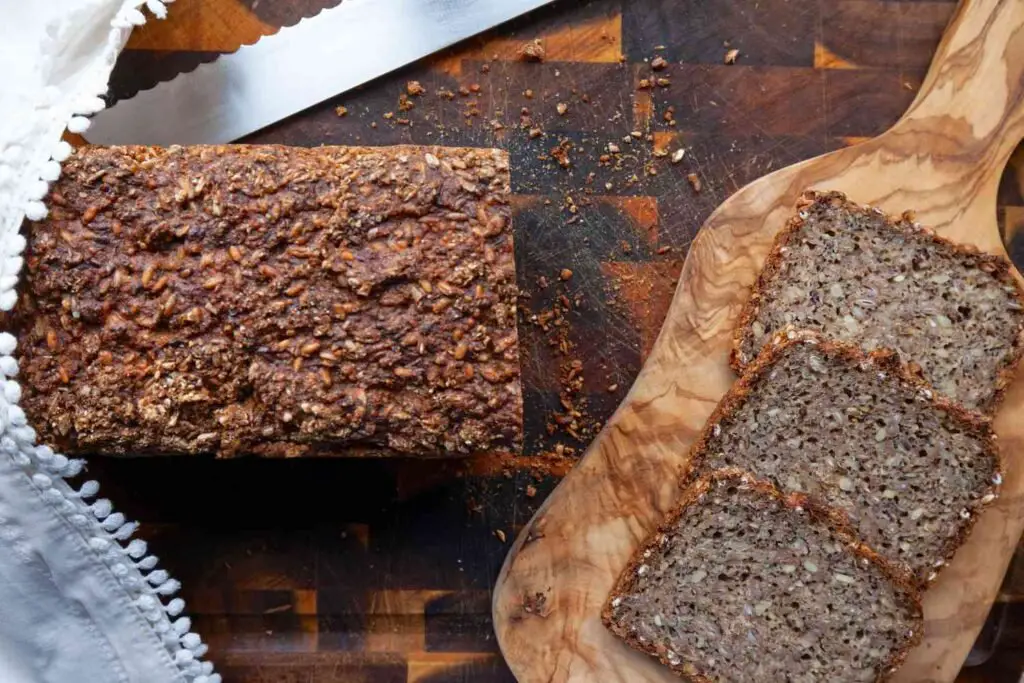
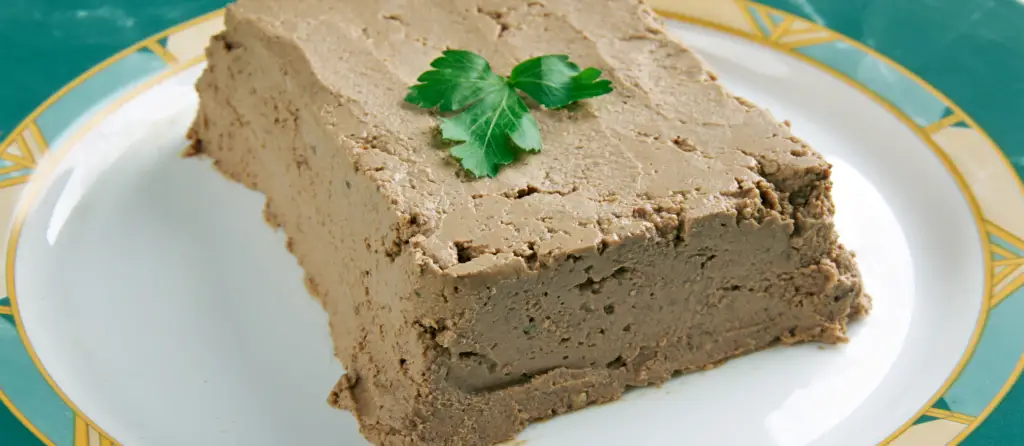

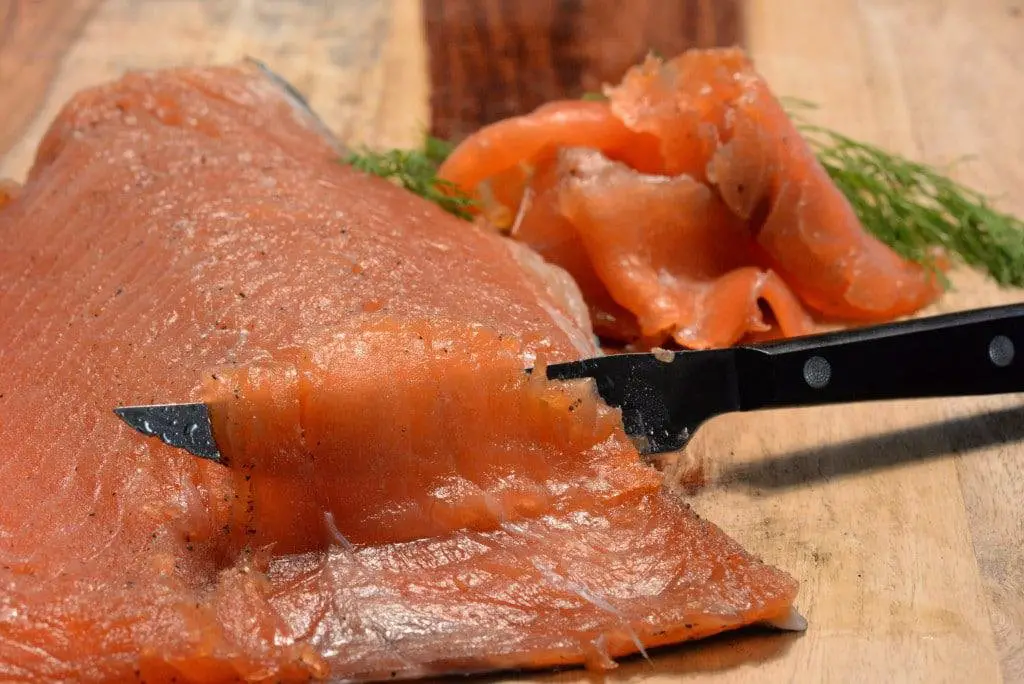
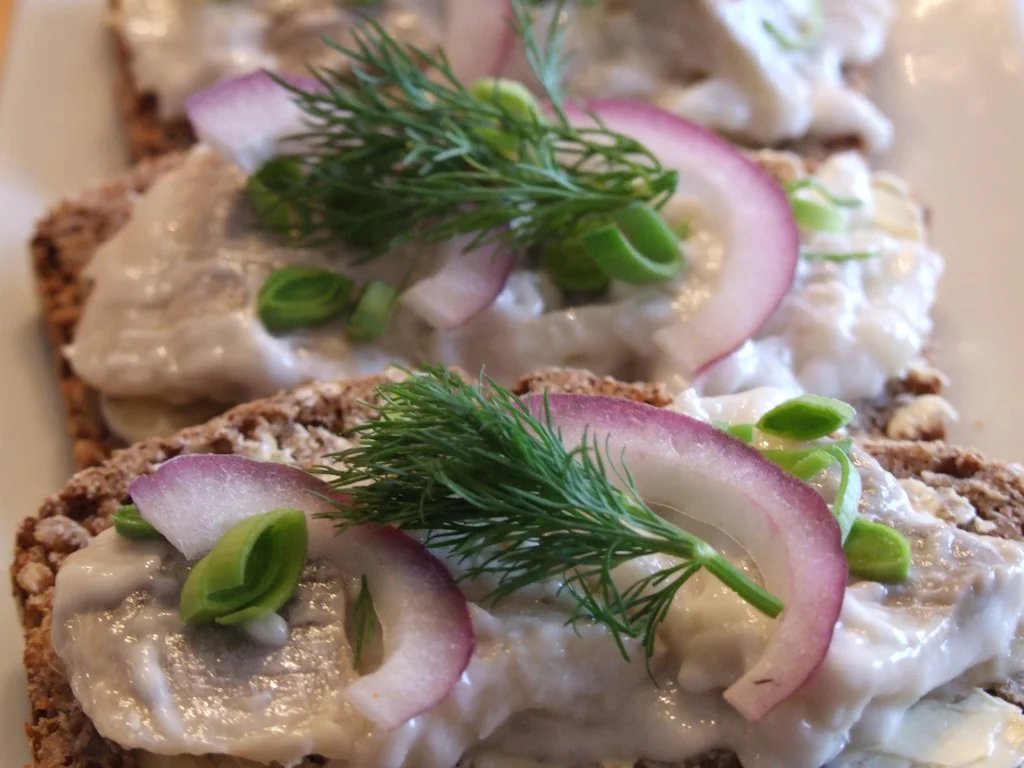

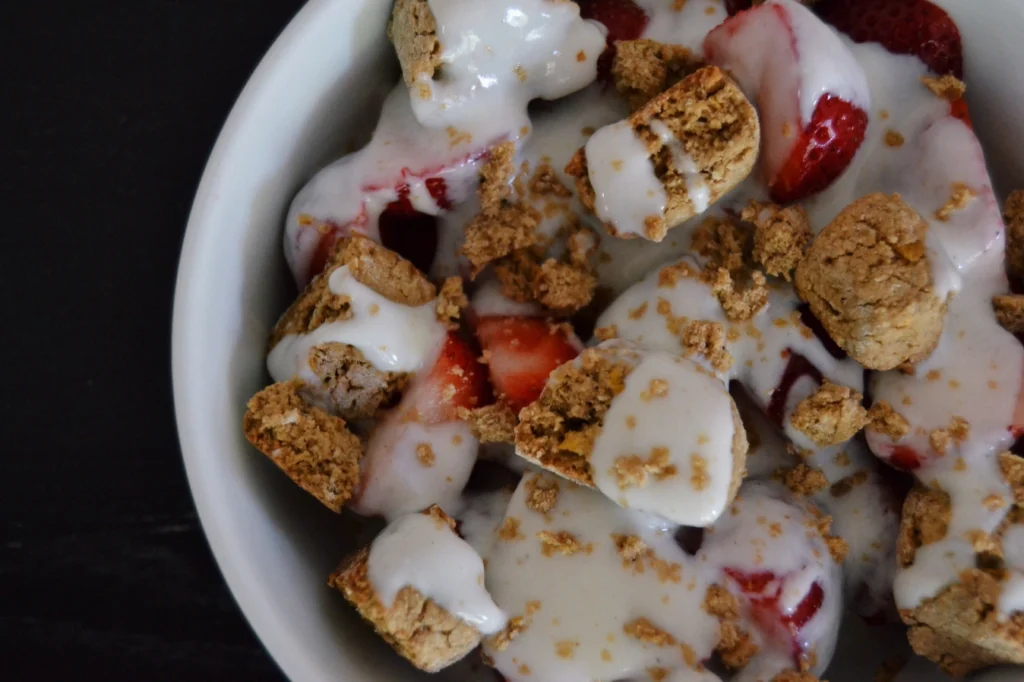
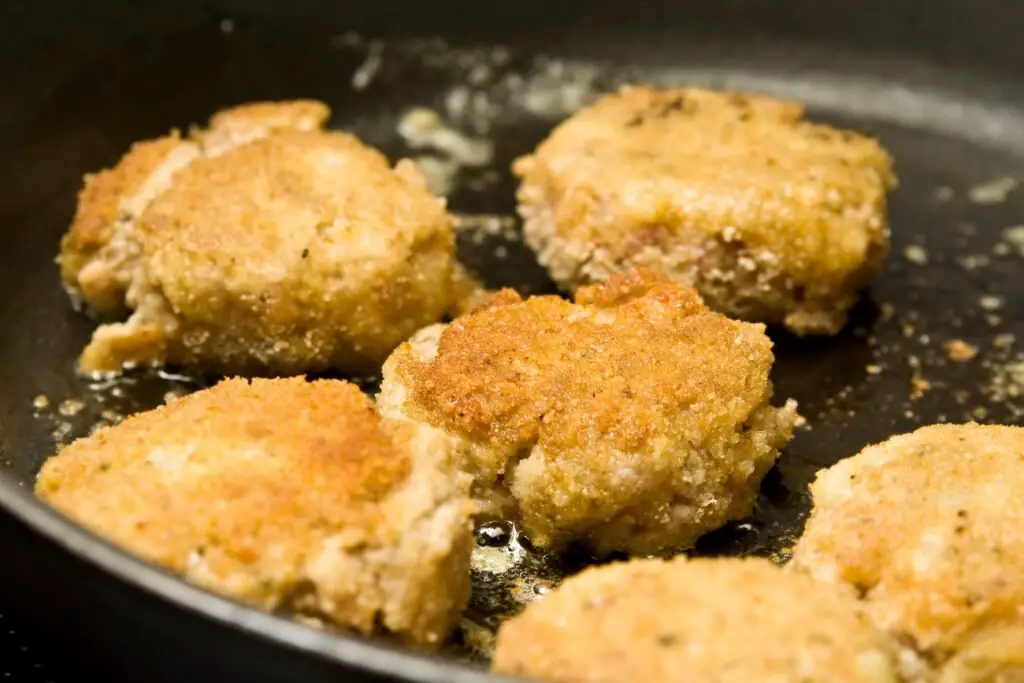


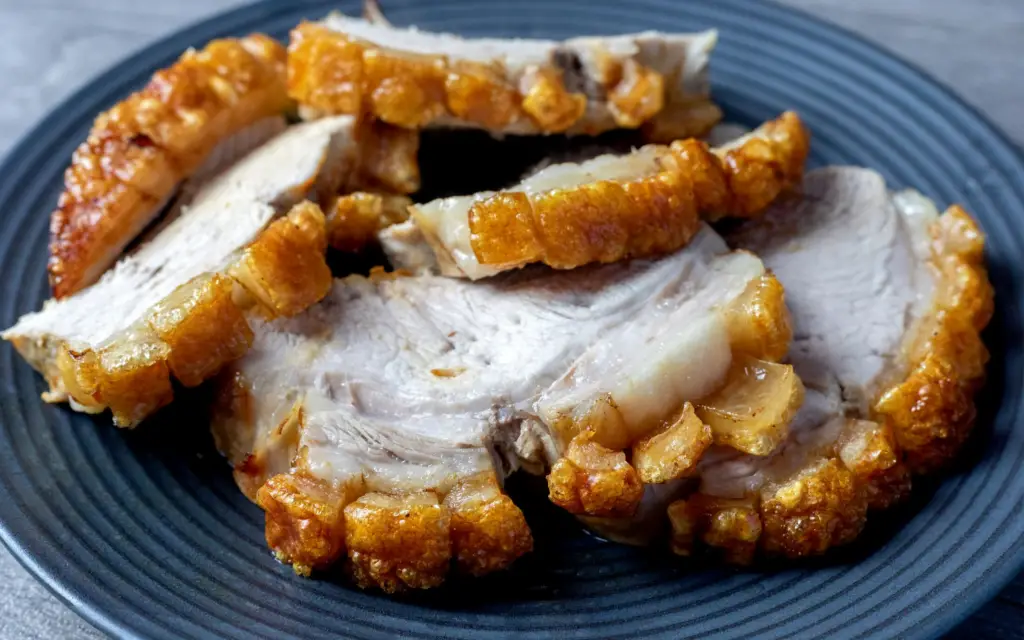
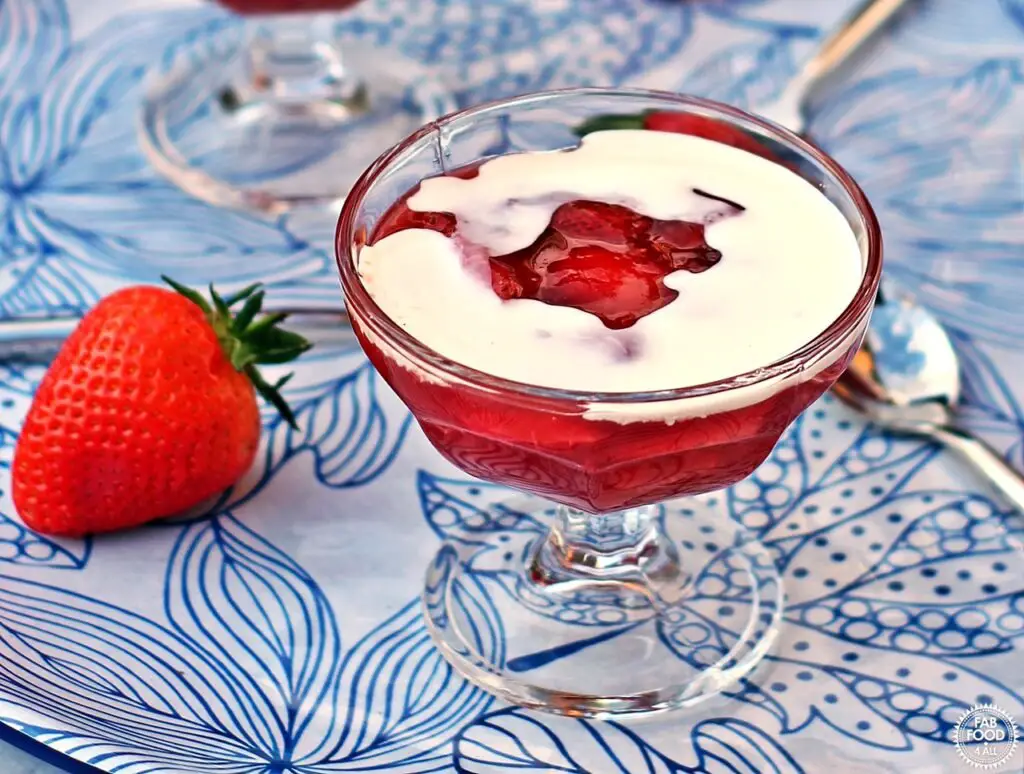
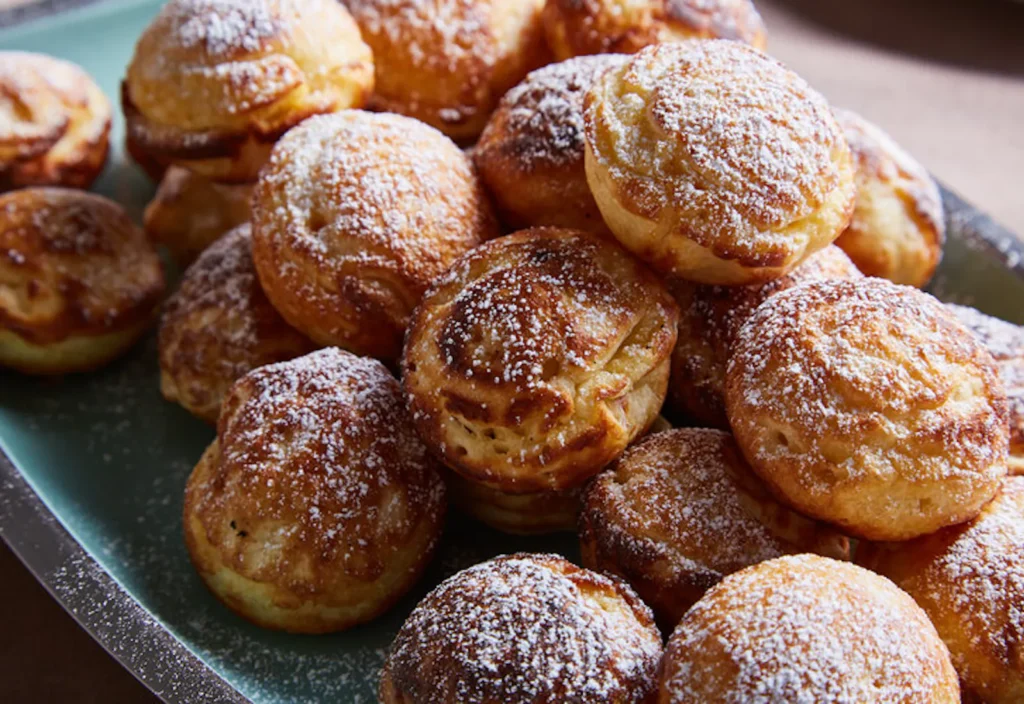
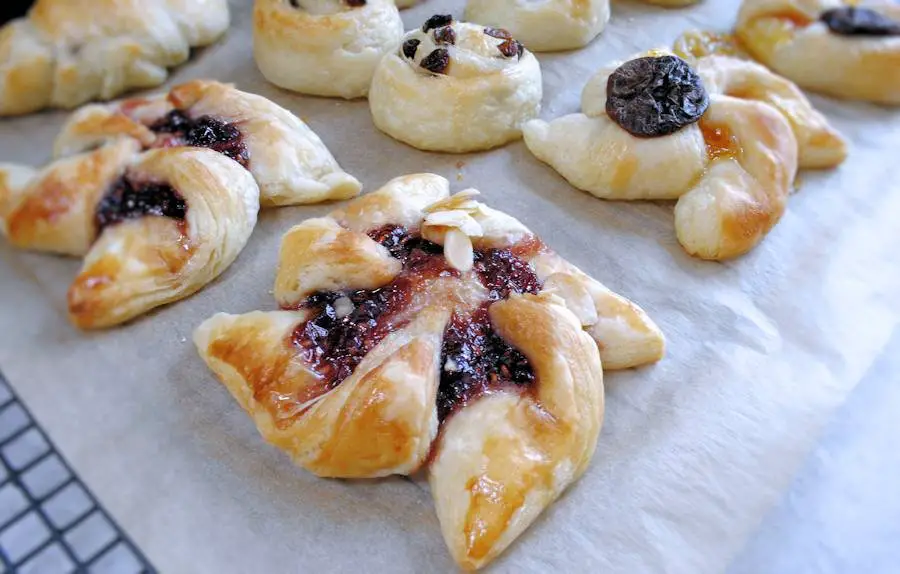
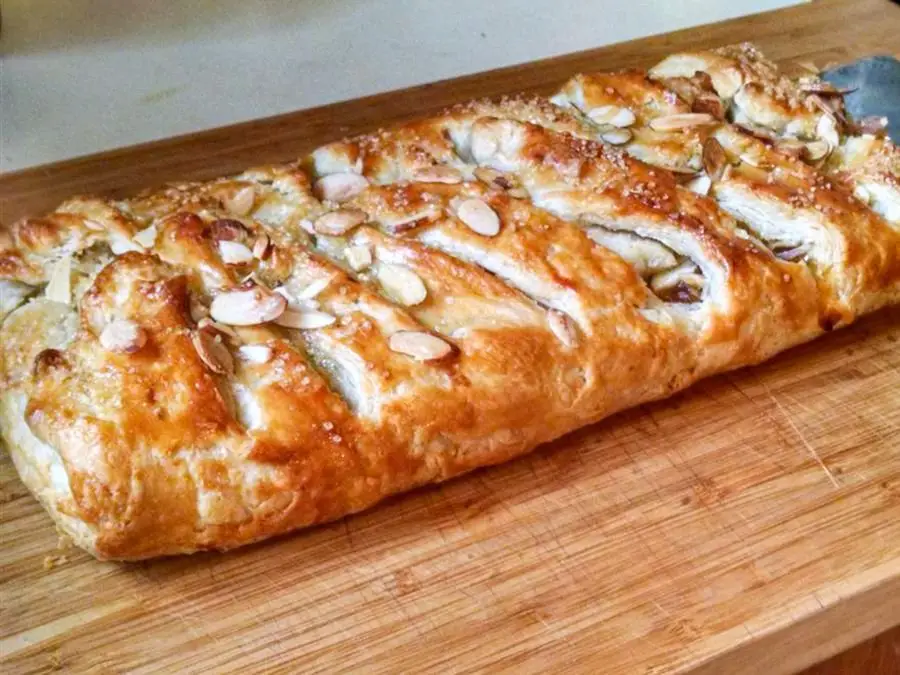
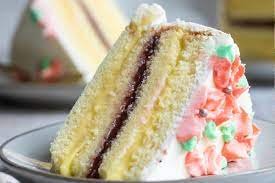
What is typical Danish food?

Cabbage and root vegetables like beets were an important part of the diet, along with rye bread, fish, and pork. Open-faced sandwiches, known as smørrebrød, are among the best-known examples of traditional Danish cuisine.
Larger traditional meals are often based on fish or pork, sometimes ground and fried as meatballs. The “national dish of Denmark” is stegt flæsk – pieces of pork, fried until crisp, and then served with boiled potatoes and parsley sauce.
Ironically, the delicious, frosted pastries known to much of the world as “Danish” are not Danish at all. They originated in Austria and are known to the Danes themselves as “Viennese bread.”
The New Nordic Cuisine trend
Over the last 30 years, Danish food culture has rediscovered its roots and reinvented old recipes for modern diners. Chef Claus Meyer was one of the main proponents of the New Nordic wave.
He and his team collaborated with food scientists to explore how food was prepared before the rise of industrialized agriculture. Meyer now owns a chain of restaurants and delicatessens in Denmark, along with a Danish food outlet at Grand Central Station in New York.
Danish Food Recipes – Great Examples to Try at Home
Embark on a culinary adventure with these authentic Danish recipes. From starters to main courses and desserts, each dish encapsulates the essence of Danish cuisine. Let’s explore some delightful recipes that you can recreate in your own kitchen.
Danish Food Recipes
Danish Food – Rødgrød med Fløde

History and Background of Rødgrød med Fløde in Danish Cuisine
Rødgrød med Fløde, a delightful Danish dessert, holds a special place in the heart of Denmark’s culinary heritage. Translated as “red porridge with cream,” this dish dates back centuries, with its origins rooted in traditional Danish farm life.
Originally a summer treat, it evolved to incorporate a variety of berries, reflecting the abundance of fresh fruits in Denmark. The dessert gained popularity for its vibrant red color, achieved through the use of berries like strawberries, raspberries, and red currants.
Rødgrød med Fløde is not only a delicious dessert but also a symbol of Danish summer and a sense of community.
Ingredients for Rødgrød med Fløde
- 4 cups mixed berries (strawberries, raspberries, red currants)
- 1 cup granulated sugar
- 1 cup water
- 2 tablespoons cornstarch
- 2 tablespoons cold water
- 1 teaspoon vanilla extract
- Whipping cream (for serving)
Recipe for Rødgrød med Fløde
1. Prepare Berries
- Ingredients:
- 4 cups mixed berries (strawberries, raspberries, red currants)
- 1 cup granulated sugar
- 1 cup water
- Steps:
- Rinse the berries thoroughly and remove any stems.
- In a saucepan, combine the berries, sugar, and water.
- Bring the mixture to a gentle boil over medium heat, stirring occasionally.
- Simmer for about 15-20 minutes until the berries soften and release their juices.
2. Make Berry Sauce
- Ingredients:
- Cooked berry mixture
- Steps:
- In a bowl, mix cornstarch with cold water to create a smooth paste.
- Gradually add the cornstarch mixture to the simmering berries, stirring continuously.
- Continue cooking until the mixture thickens to a syrup-like consistency.
- Remove from heat and stir in vanilla extract.
3. Chill and Serve
- Ingredients:
- Berry sauce
- Steps:
- Allow the berry sauce to cool slightly.
- Refrigerate for at least 2-3 hours until fully chilled.
- Serve the chilled Rødgrød med Fløde in bowls.
- Pour a generous amount of cold whipping cream over each serving.
4. Enjoy Danish Summer Flavors
- Ingredients:
- Prepared Rødgrød med Fløde
- Whipping cream
- Steps:
- Gather family or friends to share the dessert experience.
- Savor the sweetness of the berries and the richness of the cream.
- Appreciate the vibrant red color that captures the essence of Danish summer.
Serving Size, Cooking Time, and Nutritional Information
- Serving Size: Approximately 4 people
- Cooking Time: Approximately 30 minutes (plus chilling time)
- Calories: The estimated calorie count for a serving of Rødgrød med Fløde is around 150-200 calories, depending on portion sizes and the amount of whipping cream used. (Note: Nutritional information may vary based on specific ingredients and serving sizes.)
Danish Food – Danish Kringle

History and Background of Danish Kringle
Danish Kringle is a beloved pastry with its origins deeply rooted in Denmark’s rich baking traditions. Dating back to the 17th century, this flaky, layered pastry has become a staple in Danish households and an iconic treat.
The Kringle’s shape, resembling a pretzel or oval, is a testament to the cultural and historical influences that have shaped Danish cuisine. Originally enjoyed during special occasions and holidays, the Danish Kringle has evolved into a versatile dessert, often filled with various sweet fillings, making it a delightful indulgence for any occasion.
Ingredients for Danish Kringle
Pastry:
- 2 1/4 cups all-purpose flour
- 1 cup unsalted butter, cold and cubed
- 1/4 cup granulated sugar
- 1 teaspoon salt
- 1 cup cold water
Filling:
- 1 cup almond paste, grated
- 1/2 cup powdered sugar
- 1/2 cup unsalted butter, softened
- 1 teaspoon vanilla extract
Glaze:
- 1 cup powdered sugar
- 2 tablespoons milk
- 1/2 teaspoon vanilla extract
Recipe for Danish Kringle
1. Prepare the Pastry
- Ingredients:
- 2 1/4 cups all-purpose flour
- 1 cup unsalted butter, cold and cubed
- 1/4 cup granulated sugar
- 1 teaspoon salt
- 1 cup cold water
- Steps:
- In a large mixing bowl, combine flour, cold cubed butter, sugar, and salt.
- Use a pastry cutter or your hands to incorporate the butter into the flour until the mixture resembles coarse crumbs.
- Gradually add cold water, mixing until the dough comes together.
- Divide the dough in half, shape each half into a rectangle, wrap in plastic wrap, and refrigerate for at least 30 minutes.
2. Prepare the Filling
- Ingredients:
- 1 cup almond paste, grated
- 1/2 cup powdered sugar
- 1/2 cup unsalted butter, softened
- 1 teaspoon vanilla extract
- Steps:
- In a bowl, combine grated almond paste, powdered sugar, softened butter, and vanilla extract.
- Mix until well combined and set aside.
3. Assemble and Bake
- Ingredients:
- Prepared pastry dough
- Prepared almond filling
- Steps:
- Preheat the oven to 375°F (190°C).
- Roll out one portion of the chilled dough on a floured surface to form a large rectangle.
- Spread half of the almond filling over one half of the rectangle.
- Fold the other half over the filling, sealing the edges.
- Repeat the process with the second portion of dough and the remaining filling.
- Place both filled pastries on a baking sheet and bake for 20-25 minutes or until golden brown.
4. Glaze the Kringle
- Ingredients:
- 1 cup powdered sugar
- 2 tablespoons milk
- 1/2 teaspoon vanilla extract
- Steps:
- In a small bowl, whisk together powdered sugar, milk, and vanilla extract to create the glaze.
- Drizzle the glaze over the cooled Danish Kringle.
5. Serve and Enjoy
- Ingredients:
- Baked and glazed Danish Kringle
- Steps:
- Slice the Kringle into portions and serve, savoring the layers of flaky pastry and sweet almond filling.
Serving Size, Cooking Time, and Nutritional Information
- Serving Size: Approximately 8 people
- Preparation Time: Approximately 30 minutes (plus chilling time)
- Baking Time: Approximately 20-25 minutes
- Calories: The estimated calorie count for a serving of Danish Kringle is around 300-350 calories, depending on portion sizes and variations. (Note: Nutritional information may vary based on specific ingredients and serving sizes.)
Danish Food – Herring the Danish Way

History and Background of Herring the Danish Way
“Herring the Danish Way” is a classic dish deeply rooted in Denmark’s maritime history and coastal culture. Denmark’s abundance of herring in the North Sea has made it a staple in Danish cuisine for centuries.
The preparation involves marinating herring fillets in a flavorful blend of vinegar, sugar, and spices, creating a dish that perfectly balances sweet and tangy notes. This traditional Danish dish reflects the country’s connection to the sea and the culinary creativity born out of necessity.
Ingredients for Herring the Danish Way
- 1 lb herring fillets, cleaned and deboned
- 1/2 cup white vinegar
- 1/4 cup sugar
- 1 teaspoon salt
- 1 teaspoon black peppercorns
- 1 bay leaf
- 1 small red onion, thinly sliced
- 1 apple, cored and thinly sliced
- Fresh dill, for garnish
Recipe for Herring the Danish Way
1. Prepare Herring Marinade
- Ingredients:
- 1 lb herring fillets
- 1/2 cup white vinegar
- 1/4 cup sugar
- 1 teaspoon salt
- 1 teaspoon black peppercorns
- 1 bay leaf
- Steps:
- In a bowl, mix white vinegar, sugar, salt, black peppercorns, and a bay leaf to create the marinade.
- Stir the marinade until the sugar and salt are fully dissolved.
2. Marinate Herring
- Ingredients:
- Prepared herring marinade
- 1 lb herring fillets
- Steps:
- Place the cleaned and deboned herring fillets in a shallow dish.
- Pour the marinade over the herring, ensuring each fillet is well coated.
- Cover the dish and refrigerate for at least 24 hours to allow the herring to marinate and absorb the flavors.
3. Assemble Herring Dish
- Ingredients:
- Marinated herring fillets
- 1 small red onion, thinly sliced
- 1 apple, cored and thinly sliced
- Steps:
- Remove the marinated herring from the refrigerator.
- Arrange the herring fillets on a serving platter.
- Garnish with thinly sliced red onion and apple.
4. Garnish and Serve
- Ingredients:
- Assembled herring dish
- Fresh dill, for garnish
- Steps:
- Sprinkle fresh dill over the herring for a final touch.
- Serve the Herring the Danish Way as an appetizer or part of a smorgasbord.
Serving Size, Cooking Time, and Nutritional Information
- Serving Size: Approximately 4 people
- Marinating Time: 24 hours
- Calories: The estimated calorie count for a serving of Herring the Danish Way is around 200-250 calories, depending on portion sizes and additional garnishes. (Note: Nutritional information may vary based on specific ingredients and serving sizes.)
Danish Food – Gravad Laks

History and Background of Gravad Laks in Danish Cuisine
Gravad Laks, a traditional Danish dish, has its roots in preserving fish with a mixture of salt, sugar, and dill. The name “gravad laks” translates to “buried salmon,” referring to the traditional method of burying the fish in a mixture to cure and flavor it.
Originating in Scandinavia, this dish has been enjoyed for centuries, with variations found across the region. Gravad Laks captures the essence of Nordic culinary traditions, combining simplicity, freshness, and a celebration of the sea.
Today, it is a beloved dish often served during festive occasions and family gatherings.
Ingredients for Gravad Laks
- 1 pound fresh salmon fillet, skin-on
- 1/4 cup salt
- 1/4 cup granulated sugar
- 1 tablespoon crushed white peppercorns
- 1 bunch fresh dill, chopped
- Zest of 1 lemon
- 1-2 tablespoons aquavit or vodka (optional)
Recipe for Gravad Laks
1. Prepare Salmon
- Ingredients:
- 1 pound fresh salmon fillet, skin-on
- Steps:
- Rinse the salmon fillet under cold water and pat it dry with paper towels.
- Check for any remaining bones and remove them using tweezers.
- Place the salmon skin-side down on a clean surface.
2. Prepare Curing Mixture
- Ingredients:
- 1/4 cup salt
- 1/4 cup granulated sugar
- 1 tablespoon crushed white peppercorns
- 1 bunch fresh dill, chopped
- Zest of 1 lemon
- 1-2 tablespoons aquavit or vodka (optional)
- Steps:
- In a bowl, mix salt, sugar, crushed peppercorns, chopped dill, and lemon zest.
- If using, add aquavit or vodka to the mixture and combine well.
3. Cure Salmon
- Ingredients:
- Prepared salmon fillet
- Curing mixture
- Steps:
- Evenly coat the salmon fillet with the curing mixture, ensuring all sides are covered.
- Place the salmon in a dish, skin-side down.
- Wrap the salmon tightly with plastic wrap.
- Refrigerate and let it cure for 2-3 days, turning the fillet occasionally.
4. Slice and Serve
- Ingredients:
- Cured salmon fillet
- Steps:
- After curing, remove the salmon from the refrigerator and unwrap.
- With a sharp knife, thinly slice the gravad laks at a slight angle.
- Arrange the slices on a platter, garnishing with additional dill if desired.
5. Enjoy Nordic Flavors
- Ingredients:
- Sliced gravad laks
- Steps:
- Serve the Gravad Laks on dark rye bread, crispbread, or with a side of mustard sauce.
- Share this flavorful Nordic dish with family and friends, savoring the balance of salt, sweetness, and herbal notes.
Serving Size, Cooking Time, and Nutritional Information
- Serving Size: Approximately 4-6 people
- Cooking Time: 2-3 days (curing time)
- Calories: The estimated calorie count for a serving of Gravad Laks is around 150-200 calories, depending on portion sizes. (Note: Nutritional information may vary based on specific ingredients and serving sizes.)
Danish Food – Pølse (Classic Danish Hot Dog)

History and Background of Pølse (Classic Danish Hot Dog)
Pølse, the Classic Danish Hot Dog, has a special place in Denmark’s street food culture. Introduced in the early 20th century, these hot dogs quickly became a popular and beloved fast food item.
Originating from the influence of German sausages, Danish hot dogs have evolved into a cultural icon enjoyed by people of all ages.
Whether at food stalls, festivals, or family gatherings, Pølse remains a go-to comfort food, showcasing Denmark’s appreciation for simple, flavorful, and convenient culinary delights.
Ingredients for Pølse
- 4 Danish hot dog buns
- 4 beef or pork sausages
- 4 tablespoons remoulade sauce
- 4 tablespoons ketchup
- 1 tablespoon mustard
- 1 small onion, finely chopped
- Pickles for topping
- Salt and pepper to taste
Recipe for Pølse
1. Grill the Sausages
- Ingredients:
- 4 beef or pork sausages
- Steps:
- Preheat the grill or a grill pan over medium heat.
- Grill the sausages, turning occasionally, until they are cooked through and have a nice char on the outside.
2. Prepare the Buns
- Ingredients:
- 4 Danish hot dog buns
- Steps:
- Warm the hot dog buns on the grill or in a toaster until they are lightly toasted.
3. Assemble the Hot Dogs
- Ingredients:
- Grilled sausages
- Toasted hot dog buns
- Remoulade sauce
- Ketchup
- Mustard
- Finely chopped onion
- Pickles
- Salt and pepper to taste
- Steps:
- Place a grilled sausage into each toasted bun.
- Add a dollop of remoulade sauce, a drizzle of ketchup, and a touch of mustard.
- Sprinkle finely chopped onions on top and add pickles for extra crunch.
- Season with salt and pepper according to your taste.
4. Serve and Enjoy
- Ingredients:
- Assembled Pølse hot dogs
- Steps:
- Serve the Classic Danish Hot Dogs immediately while they are warm.
- Enjoy the combination of flavors and textures in each bite.
Serving Size, Cooking Time, and Nutritional Information
- Serving Size: 4 people
- Preparation Time: Approximately 15 minutes
- Cooking Time: Approximately 15 minutes (grilling time)
- Calories: The estimated calorie count for one serving of a Classic Danish Hot Dog (Pølse) is around 350-400 calories, depending on the type of sausage and condiments used. (Note: Nutritional information may vary based on specific ingredients and serving sizes.)
Danish Food – Karbonader (Danish Breaded Pork Patties)

History and Background of Karbonader (Danish Breaded Pork Patties)
Karbonader, or Danish Breaded Pork Patties, hold a special place in Denmark’s culinary heritage. Originating from the rural traditions of Danish farm life, this dish reflects the resourcefulness of using pork—a prevalent meat source in Denmark.
Traditionally served as a hearty and comforting meal, Karbonader showcases the simplicity of Danish cuisine while providing a delicious experience. Often enjoyed with potatoes and vegetables, these pork patties offer a taste of home-cooked comfort that resonates with Danish families.
Ingredients for Karbonader
For the Pork Patties:
- 1 pound ground pork
- 1/2 cup breadcrumbs
- 1/4 cup milk
- 1 small onion, finely chopped
- 1 egg
- Salt and pepper to taste
- Vegetable oil for frying
For Breading:
- 1 cup breadcrumbs
- 2 eggs, beaten
Recipe for Karbonader
1. Prepare the Pork Patties
- Ingredients:
- 1 pound ground pork
- 1/2 cup breadcrumbs
- 1/4 cup milk
- 1 small onion, finely chopped
- 1 egg
- Salt and pepper to taste
- Steps:
- In a mixing bowl, combine ground pork, breadcrumbs, milk, finely chopped onion, and one beaten egg.
- Season the mixture with salt and pepper to taste.
- Shape the pork mixture into evenly sized patties, ensuring they hold together well.
2. Bread the Pork Patties
- Ingredients:
- 1 cup breadcrumbs
- 2 eggs, beaten
- Steps:
- Set up a breading station with one bowl of breadcrumbs and another with beaten eggs.
- Dip each pork patty into the beaten eggs, ensuring it is coated.
- Transfer the patty to the breadcrumbs, covering it evenly with a breadcrumb coating.
3. Fry the Karbonader
- Ingredients:
- Breaded pork patties
- Vegetable oil for frying
- Steps:
- Heat vegetable oil in a pan over medium heat.
- Carefully place the breaded pork patties into the hot oil, cooking until golden brown on each side.
- Ensure the pork patties reach an internal temperature of 160°F (71°C) for safe consumption.
4. Serve and Enjoy
- Ingredients:
- Fried Karbonader
- Steps:
- Drain excess oil from the pork patties on paper towels.
- Serve the Karbonader hot, paired with potatoes, vegetables, or your preferred side dishes.
Serving Size, Cooking Time, and Nutritional Information
- Serving Size: Approximately 4 people
- Preparation Time: Approximately 15 minutes
- Cooking Time: Approximately 15 minutes
- Calories: The estimated calorie count for a serving of Karbonader is around 300-350 calories, depending on portion sizes and variations. (Note: Nutritional information may vary based on specific ingredients and serving sizes.)
Danish Food – Æbleskiver

History and Background of Æbleskiver in Danish Cuisine
Æbleskiver, a delightful Danish treat, has a rich history rooted in Danish kitchens and holiday traditions. Originating in Denmark, Æbleskiver are round, fluffy pancakes with a distinctive spherical shape.
The name translates to “apple slices,” although the modern version typically doesn’t contain apples. Traditionally enjoyed during the Christmas season, Æbleskiver are cooked in a special pan with hemispherical indentations, creating a perfect vessel for toppings like powdered sugar and jam.
These sweet and airy delights are not only a beloved holiday snack but also a symbol of Danish coziness and hospitality.
Ingredients for Æbleskiver
- 1 cup all-purpose flour
- 1 1/2 teaspoons baking powder
- 1 tablespoon granulated sugar
- 1/4 teaspoon salt
- 2 large eggs
- 1 cup buttermilk
- 2 tablespoons unsalted butter, melted
- Powdered sugar (for dusting)
- Jam or preserves (for serving)
Recipe for Æbleskiver
1. Prepare Batter
- Ingredients:
- 1 cup all-purpose flour
- 1 1/2 teaspoons baking powder
- 1 tablespoon granulated sugar
- 1/4 teaspoon salt
- 2 large eggs
- 1 cup buttermilk
- 2 tablespoons unsalted butter, melted
- Steps:
- In a bowl, whisk together flour, baking powder, sugar, and salt.
- In a separate bowl, beat the eggs and add buttermilk, melted butter.
- Combine the wet and dry ingredients, stirring until just mixed.
2. Heat Æbleskiver Pan
- Ingredients:
- Prepared batter
- Steps:
- Preheat the Æbleskiver pan on medium heat.
- Lightly grease each indentation with butter or cooking spray.
3. Cook Æbleskiver
- Ingredients:
- Prepared batter
- Steps:
- Pour a small amount of batter into each indentation, filling it halfway.
- As the edges set, use a skewer or fork to gently flip the Æbleskiver, allowing the uncooked batter to flow into the center.
- Continue rotating and flipping until golden brown on all sides.
4. Serve and Enjoy
- Ingredients:
- Cooked Æbleskiver
- Powdered sugar
- Jam or preserves
- Steps:
- Transfer the Æbleskiver to a plate.
- Dust with powdered sugar and serve warm.
- Enjoy with your favorite jam or preserves.
Serving Size, Cooking Time, and Nutritional Information
- Serving Size: Approximately 4 people
- Cooking Time: Approximately 20-25 minutes
- Calories: The estimated calorie count for a serving of Æbleskiver is around 150-200 calories, depending on portion sizes and toppings. (Note: Nutritional information may vary based on specific ingredients and serving sizes.)
Danish Food – Danish Cucumber Salad – Agurkesalat

History and Background of Danish Cucumber Salad (Agurkesalat)
Danish Cucumber Salad, known as “Agurkesalat,” is a refreshing and quintessentially Danish side dish. Rooted in Denmark’s agricultural traditions, this salad reflects the nation’s reliance on fresh, local produce.
Cucumbers thrive in the Danish climate, making them a natural choice for creating a cool and crisp salad. Agurkesalat is often served alongside traditional Danish dishes, adding a burst of flavor and texture to meals.
Its simplicity and reliance on seasonal ingredients exemplify the Danish approach to wholesome, uncomplicated fare.
Ingredients for Danish Cucumber Salad (Agurkesalat)
- 2 large cucumbers, thinly sliced
- 1/2 red onion, thinly sliced
- 1/4 cup fresh dill, chopped
- 1/3 cup white vinegar
- 1/4 cup granulated sugar
- Salt and pepper to taste
Recipe for Danish Cucumber Salad (Agurkesalat)
1. Prepare the Cucumbers and Onion
- Ingredients:
- 2 large cucumbers, thinly sliced
- 1/2 red onion, thinly sliced
- Steps:
- Wash and peel the cucumbers, then thinly slice them using a knife or a mandoline.
- Thinly slice the red onion and separate the slices.
2. Create the Dressing
- Ingredients:
- 1/3 cup white vinegar
- 1/4 cup granulated sugar
- Salt and pepper to taste
- Steps:
- In a small bowl, combine white vinegar and granulated sugar, stirring until the sugar dissolves.
- Season the dressing with salt and pepper to taste.
3. Combine Ingredients and Chill
- Ingredients:
- Prepared cucumbers and onions
- Dressing
- Steps:
- In a mixing bowl, combine the sliced cucumbers, red onions, and chopped fresh dill.
- Pour the prepared dressing over the cucumber mixture, ensuring it coats the ingredients evenly.
- Toss the salad gently to combine the flavors.
- Cover the bowl and refrigerate for at least 30 minutes to allow the salad to chill and the flavors to meld.
4. Serve and Enjoy
- Ingredients:
- Chilled Danish Cucumber Salad
- Steps:
- Remove the salad from the refrigerator and give it a final gentle toss.
- Serve the Danish Cucumber Salad (Agurkesalat) as a crisp and flavorful accompaniment to your meal.
Serving Size, Cooking Time, and Nutritional Information
- Serving Size: Approximately 4 people
- Preparation Time: Approximately 15 minutes
- Chilling Time: At least 30 minutes
- Calories: The estimated calorie count for a serving of Danish Cucumber Salad is around 50-70 calories, depending on portion sizes and variations. (Note: Nutritional information may vary based on specific ingredients and serving sizes.)
Danish Food – Danish Chicken and Asparagus Tartlets

History and Background of Danish Chicken and Asparagus Tartlets
Danish Chicken and Asparagus Tartlets represent a modern twist on traditional Danish cuisine, merging local ingredients with international flavors. While Denmark has a strong culinary heritage rooted in simplicity and quality, this dish showcases the adaptability of Danish cooking to global influences.
The combination of tender chicken, fresh asparagus, and a creamy filling encased in flaky pastry exemplifies the Danish commitment to delicious, innovative fare.
Ingredients for Danish Chicken and Asparagus Tartlets
For the Tartlet Filling:
- 1 cup cooked chicken, shredded
- 1 cup asparagus, chopped
- 1/2 cup cream cheese
- 1/4 cup mayonnaise
- 1/4 cup grated Parmesan cheese
- 1 tablespoon fresh lemon juice
- Salt and pepper to taste
For the Tartlet Pastry:
- 1 sheet puff pastry, thawed
Recipe for Danish Chicken and Asparagus Tartlets
1. Prepare the Tartlet Filling
- Ingredients:
- 1 cup cooked chicken, shredded
- 1 cup asparagus, chopped
- 1/2 cup cream cheese
- 1/4 cup mayonnaise
- 1/4 cup grated Parmesan cheese
- 1 tablespoon fresh lemon juice
- Salt and pepper to taste
- Steps:
- In a mixing bowl, combine shredded chicken and chopped asparagus.
- In a separate bowl, mix cream cheese, mayonnaise, Parmesan cheese, and fresh lemon juice until smooth.
- Add the creamy mixture to the chicken and asparagus, stirring to coat evenly.
- Season the filling with salt and pepper to taste.
2. Prepare the Tartlet Pastry
- Ingredients:
- 1 sheet puff pastry, thawed
- Steps:
- Preheat the oven to 400°F (200°C).
- Roll out the thawed puff pastry on a floured surface.
- Cut the pastry into squares or circles, depending on your preference and the size of your tartlet molds.
3. Assemble and Bake the Tartlets
- Ingredients:
- Tartlet filling
- Prepared puff pastry
- Steps:
- Press the puff pastry into tartlet molds, ensuring it covers the bottom and sides.
- Fill each pastry shell with the chicken and asparagus mixture.
- Bake in the preheated oven for approximately 15-20 minutes or until the pastry is golden brown.
4. Serve and Enjoy
- Ingredients:
- Baked chicken and asparagus tartlets
- Steps:
- Remove the tartlets from the oven and let them cool slightly.
- Serve the Danish Chicken and Asparagus Tartlets as a delightful appetizer or light meal.
Serving Size, Cooking Time, and Nutritional Information
- Serving Size: Approximately 4 people
- Preparation Time: Approximately 20 minutes
- Cooking Time: Approximately 15-20 minutes
- Calories: The estimated calorie count for a serving of Danish Chicken and Asparagus Tartlets is around 250-300 calories, depending on portion sizes and variations. (Note: Nutritional information may vary based on specific ingredients and serving sizes.)
Danish Food – Brunede Kartofler (Caramelized Browned Potatoes)

History and Background of Brunede Kartofler
Brunede Kartofler, translated as “Caramelized Potatoes,” is a classic Danish dish with roots deep in Danish holiday traditions. Originating in the early 19th century, this sweet and caramelized side dish is often associated with Christmas and festive gatherings.
The dish showcases the Danish love for potatoes, combining them with a rich caramel sauce to create a unique and flavorful accompaniment to holiday meals.
Brunede Kartofler perfectly balances sweetness and savory elements, adding a touch of indulgence to the Danish culinary experience.
Ingredients for Brunede Kartofler
- 1 lb small potatoes, peeled
- 1/2 cup granulated sugar
- 1/4 cup unsalted butter
- 1/4 cup water
Recipe for Brunede Kartofler
1. Boil the Potatoes
- Ingredients:
- 1 lb small potatoes, peeled
- Water for boiling
- Steps:
- Place the peeled small potatoes in a pot of water.
- Bring the water to a boil and cook the potatoes until they are just tender.
- Drain the potatoes and set them aside.
2. Caramelize the Sugar
- Ingredients:
- 1/2 cup granulated sugar
- Steps:
- In a large skillet over medium heat, sprinkle the sugar evenly.
- Allow the sugar to melt and caramelize, stirring occasionally to prevent burning.
- Once the sugar turns golden brown and has a caramel consistency, add the butter.
3. Add Butter and Water
- Ingredients:
- Caramelized sugar
- 1/4 cup unsalted butter
- 1/4 cup water
- Steps:
- Stir in the unsalted butter until fully melted and incorporated with the caramelized sugar.
- Carefully add water to the skillet, stirring continuously to create a smooth caramel sauce.
4. Coat Potatoes in Caramel
- Ingredients:
- Boiled potatoes
- Caramel sauce
- Steps:
- Add the boiled potatoes to the caramel sauce, ensuring they are well coated.
- Cook the potatoes in the caramel sauce for a few minutes, allowing them to absorb the flavors.
5. Serve and Enjoy
- Ingredients:
- Caramel-coated potatoes
- Steps:
- Transfer the Brunede Kartofler to a serving dish.
- Serve the caramelized potatoes as a delightful side dish, especially during holiday feasts.
Serving Size, Cooking Time, and Nutritional Information
- Serving Size: Approximately 4 people
- Preparation Time: Approximately 15 minutes
- Cooking Time: Approximately 20 minutes
- Calories: The estimated calorie count for a serving of Brunede Kartofler is around 200-250 calories, depending on portion sizes and variations. (Note: Nutritional information may vary based on specific ingredients and serving sizes.)
Danish Food – Koldskål

History and Background of Koldskål in Danish Cuisine
Koldskål, a refreshing cold buttermilk soup, has deep roots in Danish culinary traditions. Originating in Denmark, this chilled delight is particularly popular during the warmer months and often enjoyed as a dessert or snack.
The name “Koldskål” translates to “cold bowl,” emphasizing its served temperature. Historically, Koldskål was a way to utilize surplus buttermilk and prevent food waste.
Over time, it has become a cherished dish, especially during the Danish summer, offering a combination of tangy buttermilk, sweetness, and the subtle aroma of vanilla.
Ingredients for Koldskål
- 4 cups buttermilk
- 1 cup plain yogurt
- 1/2 cup granulated sugar
- 1 teaspoon vanilla sugar or vanilla extract
- Zest of 1 lemon
- 1 cup small, crisp vanilla biscuits or kammerjunker
- Fresh berries (for garnish)
Recipe for Koldskål
1. Mix Buttermilk Base
- Ingredients:
- 4 cups buttermilk
- 1 cup plain yogurt
- 1/2 cup granulated sugar
- 1 teaspoon vanilla sugar or vanilla extract
- Zest of 1 lemon
- Steps:
- In a large bowl, combine buttermilk, yogurt, sugar, vanilla sugar, and lemon zest.
- Whisk the mixture until the sugar is fully dissolved.
2. Chill the Mixture
- Ingredients:
- Buttermilk base
- Steps:
- Cover the bowl and refrigerate the buttermilk mixture for at least 1-2 hours, allowing it to chill thoroughly.
3. Prepare Biscuits
- Ingredients:
- 1 cup small vanilla biscuits or kammerjunkere
- Steps:
- Crush the vanilla biscuits into smaller pieces.
- Set aside for later use as a topping.
4. Serve Koldskål
- Ingredients:
- Chilled buttermilk base
- Crushed vanilla biscuits
- Fresh berries (for garnish)
- Steps:
- Before serving, stir the chilled buttermilk mixture to ensure consistency.
- Ladle Koldskål into individual bowls.
- Sprinkle the crushed vanilla biscuits on top.
- Garnish with fresh berries for added color and flavor.
5. Enjoy the Refreshing Taste
- Ingredients:
- Served Koldskål
- Steps:
- Gather with family or friends to enjoy the refreshing taste of Koldskål.
- Savor the sweet and tangy flavors with the delightful crunch of vanilla biscuits.
- Discuss your favorite summer memories and culinary traditions.
Serving Size, Cooking Time, and Nutritional Information
- Serving Size: Approximately 4 people
- Preparation Time: Approximately 10 minutes (plus chilling time)
- Calories: The estimated calorie count for a serving of Koldskål is around 150-200 calories, depending on portion sizes and toppings. (Note: Nutritional information may vary based on specific ingredients and serving sizes.)
Danish Food – Danish Pastries

History and Background of Danish Pastries
Danish pastries, known for their flaky and buttery layers, have a rich history deeply rooted in Denmark. Originating in the 19th century, these delightful pastries were inspired by Austrian techniques.
The Danish bakers, adding their own twist, created a pastry that became a symbol of Danish craftsmanship. These pastries gained international popularity, especially the famous “Danish” known worldwide.
Today, Danish pastries are enjoyed for breakfast, brunch, or as sweet treats during various celebrations.
Ingredients for Danish Pastries
- 1 sheet puff pastry (store-bought or homemade)
- 1/2 cup unsalted butter, softened
- 1/4 cup granulated sugar
- 1 teaspoon ground cinnamon
- 1/2 cup chopped nuts (optional)
- Fruit preserves or pastry cream (for filling)
- Powdered sugar (for dusting)
Recipe for Danish Pastries
1. Prepare Pastry Base
- Ingredients:
- 1 sheet puff pastry
- Steps:
- Preheat the oven to 400°F (200°C).
- Roll out the puff pastry sheet on a floured surface.
2. Make Cinnamon Butter
- Ingredients:
- 1/2 cup unsalted butter, softened
- 1/4 cup granulated sugar
- 1 teaspoon ground cinnamon
- Steps:
- In a bowl, mix softened butter, sugar, and ground cinnamon until well combined.
3. Add Cinnamon Filling
- Ingredients:
- Prepared puff pastry
- Cinnamon butter
- Steps:
- Spread the cinnamon butter evenly over the rolled-out puff pastry.
- Optionally, sprinkle chopped nuts over the butter.
4. Create Pastry Shapes
- Ingredients:
- Filled puff pastry
- Steps:
- Fold the pastry in half, covering the cinnamon butter.
- Cut the pastry into strips or triangles, depending on your preferred shape.
5. Bake and Fill
- Ingredients:
- Shaped pastry pieces
- Fruit preserves or pastry cream
- Steps:
- Place the pastry pieces on a baking sheet lined with parchment paper.
- Bake in the preheated oven for 15-20 minutes or until golden brown.
- Allow the pastries to cool slightly.
- If desired, create a small indentation in the center and fill with fruit preserves or pastry cream.
6. Dust with Powdered Sugar
- Ingredients:
- Baked and filled pastries
- Powdered sugar
- Steps:
- Dust the Danish pastries with powdered sugar for a finishing touch.
Serving Size, Cooking Time, and Nutritional Information
- Serving Size: Approximately 6 people
- Cooking Time: Approximately 30 minutes
- Calories: The estimated calorie count for a serving of Danish pastries is around 200-250 calories, depending on the size and filling. (Note: Nutritional information may vary based on specific ingredients and serving sizes.)
Danish Food – Smørrebrød: The Art of Danish Open-Faced Sandwiches

Smørrebrød has been a staple in Danish cuisine since the 19th century, evolving from a practical lunch option to an artful presentation of various toppings. Perfect for casual lunches, celebrations, and gatherings.
Smørrebrød Ingredients
- Rye bread slices
- Butter
- Herring (pickled or marinated)
- Shrimp
- Egg slices
- Radishes, dill, and chives for garnish
Danish Food – Smørrebrød Recipe
- Spread butter on rye bread slices.
- Arrange herring, shrimp, and egg slices on the bread.
- Garnish with radishes, dill, and chives.
- Serve chilled and enjoy the symphony of flavors.
Danish Food – Chicken Salad with Mushrooms and Bacon

History and Background of Chicken Salad with Mushrooms and Bacon
Chicken Salad with Mushrooms and Bacon is a delightful dish that reflects the simplicity and heartiness of Danish cuisine. Originating in Denmark, this salad showcases a combination of tender chicken, earthy mushrooms, and savory bacon, creating a harmonious blend of flavors.
Danish cuisine often emphasizes locally sourced ingredients, and this salad is a testament to the country’s culinary tradition of incorporating fresh and wholesome components.
Whether served as a light lunch or a flavorful side dish, Chicken Salad with Mushrooms and Bacon has become a beloved staple in Danish households.
Ingredients for Chicken Salad with Mushrooms and Bacon
- 2 boneless, skinless chicken breasts
- 6 slices bacon, cooked and crumbled
- 8 oz mushrooms, sliced
- 1/4 cup mayonnaise
- 1 tablespoon Dijon mustard
- 1 tablespoon white wine vinegar
- Salt and black pepper, to taste
- 2 green onions, thinly sliced
- 1 tablespoon fresh parsley, chopped
- Mixed salad greens (optional, for serving)
Recipe for Chicken Salad with Mushrooms and Bacon
1. Cook Chicken Breasts
- Ingredients:
- 2 boneless, skinless chicken breasts
- Steps:
- Season the chicken breasts with salt and pepper.
- Cook the chicken breasts in a skillet over medium heat until fully cooked, approximately 6-8 minutes per side.
- Let the chicken cool, then shred it into bite-sized pieces.
2. Prepare Bacon and Mushrooms
- Ingredients:
- 6 slices bacon, cooked and crumbled
- 8 oz mushrooms, sliced
- Steps:
- Cook the bacon until crispy, then crumble it into smaller pieces.
- In the same skillet, sauté the sliced mushrooms until they are tender.
3. Mix Dressing
- Ingredients:
- 1/4 cup mayonnaise
- 1 tablespoon Dijon mustard
- 1 tablespoon white wine vinegar
- Steps:
- In a bowl, whisk together mayonnaise, Dijon mustard, and white wine vinegar to create the dressing.
4. Combine Ingredients
- Ingredients:
- Shredded chicken
- Crumbled bacon
- Sautéed mushrooms
- Prepared dressing
- Salt and black pepper, to taste
- Steps:
- In a large bowl, combine the shredded chicken, crumbled bacon, and sautéed mushrooms.
- Pour the dressing over the mixture and toss until well coated.
- Season with salt and black pepper to taste.
5. Garnish and Serve
- Ingredients:
- Mixed salad greens (optional, for serving)
- 2 green onions, thinly sliced
- 1 tablespoon fresh parsley, chopped
- Steps:
- Optionally, serve the Chicken Salad on a bed of mixed salad greens.
- Garnish with thinly sliced green onions and chopped fresh parsley.
Serving Size, Cooking Time, and Nutritional Information
- Serving Size: Approximately 4 people
- Cooking Time: Approximately 30 minutes
- Calories: The estimated calorie count for a serving of Chicken Salad with Mushrooms and Bacon is around 300-350 calories, depending on portion sizes and optional ingredients. (Note: Nutritional information may vary based on specific ingredients and serving sizes.)
Danish Food – Frikadeller: Danish Meatballs

Frikadeller traces its roots to traditional Danish cuisine, offering a savory and comforting meatball experience. It is an Ideal dish for family dinners, festive occasions, and picnics.
Danish Food – Frikadeller Ingredients
- Ground pork and veal
- Onion
- Milk
- Egg
- Flour
- Salt and pepper
Danish Food – Frikadeller Recipe
- Mix ground pork and veal with finely chopped onion.
- Add milk, egg, flour, salt, and pepper.
- Shape into small meatballs and pan-fry until golden.
- Serve with potatoes and lingonberry sauce.
Matching Drinks
Pair Smørrebrød with a crisp Danish lager or aquavit for an authentic experience. For Frikadeller, a light red wine or a traditional Danish beverage like snaps complements the flavors well.
Danish Food: Flæskesteg: Roast Pork with Crispy Crackling

This is a classic dish enjoyed during festive occasions and family gatherings.
Flæskesteg Ingredients
- Pork roast with skin
- Salt
- Pepper
Danish Food Flæskesteg Recipe
- Score the pork skin and rub with salt and pepper.
- Roast until the skin becomes crispy.
- Serve with potatoes, red cabbage, and gravy.
Danish Food Leverpostej: Danish Liver Pâté

This is a traditional Danish dish with roots in the rural countryside.
Leverpostej Ingredients
- Pork liver
- Pork fat
- Onions
- Milk
- Eggs
- Salt and pepper
Danish Food Leverpostej Recipe
- Blend pork liver, fat, and onions.
- Add milk, eggs, salt, and pepper.
- Bake until golden and serve with pickles and rye bread.
Danish Food: Stegt Flæsk med Persillesovs: Fried Pork with Parsley Sauce

This is a beloved national dish enjoyed across Denmark.
Danish Food: Stegt Flæsk med Persillesovs Ingredients
- Pork belly slices
- Potatoes
- Butter
- Flour
- Milk
- Fresh parsley
Danish Food: Stegt Flæsk med Persillesovs Recipe
- Fry pork belly slices until crispy.
- Boil potatoes and prepare a parsley sauce with butter, flour, milk, and chopped parsley.
- Serve the pork with potatoes and parsley sauce.
Sillesovs is best served family-style, allowing everyone to dig in and enjoy the flavors together.
Matching Drinks
Pair Flæskesteg with a robust Danish beer or a full-bodied red wine. For Leverpostej, a Danish schnapps or a cold glass of buttermilk complements the richness. Stegt Flæsk med Persillesovs pairs well with a classic Danish lager or a glass of white wine.
Danish Dessert: Risalamande: Danish Rice Pudding

This is a festive dessert enjoyed during Christmas celebrations.
Risalamande: Ingredients:
- Rice
- Milk
- Sugar
- Almonds
- Whipped cream
- Vanilla extract
Danish Dessert: Risalamande: Recipe:
- Cook rice in milk and sugar.
- Add chopped almonds and vanilla extract.
- Fold in whipped cream and serve chilled with cherry sauce.
Danish Food – Traditional Danish Layer Cake

History and Background of Traditional Danish Layer Cake
The Traditional Danish Layer Cake, also known as “Lagkage,” holds a special place in Denmark’s culinary heritage. Originating in the 19th century, this cake has become a symbol of celebration and togetherness in Danish culture.
Its layers of sponge cake, rich custard or cream filling, and a sweet icing on top make it a centerpiece at birthdays, weddings, and other joyous occasions. The Lagkage represents the Danish commitment to craftsmanship, with each layer showcasing a perfect blend of textures and flavors.
Ingredients for Traditional Danish Layer Cake
Sponge Cake Layers:
- 2 cups all-purpose flour
- 2 teaspoons baking powder
- 4 large eggs
- 1 cup granulated sugar
- 1 cup unsalted butter, melted
- 1 cup milk
- 1 teaspoon vanilla extract
Custard Filling:
- 2 cups whole milk
- 4 large egg yolks
- 1/2 cup granulated sugar
- 1/4 cup cornstarch
- 1 teaspoon vanilla extract
Icing:
- 2 cups powdered sugar
- 3-4 tablespoons water
- 1 teaspoon cocoa powder (optional for chocolate icing)
Recipe for Traditional Danish Layer Cake
1. Bake the Sponge Cake Layers
- Ingredients:
- 2 cups all-purpose flour
- 2 teaspoons baking powder
- 4 large eggs
- 1 cup granulated sugar
- 1 cup unsalted butter, melted
- 1 cup milk
- 1 teaspoon vanilla extract
- Steps:
- Preheat the oven to 350°F (180°C) and grease three 8-inch cake pans.
- In a bowl, sift together flour and baking powder.
- In a separate bowl, beat eggs and sugar until light and fluffy.
- Gradually add melted butter, milk, and vanilla extract to the egg mixture.
- Fold in the sifted flour mixture until well combined.
- Divide the batter among the prepared pans and bake for 20-25 minutes or until a toothpick comes out clean.
- Allow the sponge cakes to cool completely.
2. Prepare the Custard Filling
- Ingredients:
- 2 cups whole milk
- 4 large egg yolks
- 1/2 cup granulated sugar
- 1/4 cup cornstarch
- 1 teaspoon vanilla extract
- Steps:
- In a saucepan, heat milk until it just begins to simmer.
- In a bowl, whisk together egg yolks, sugar, cornstarch, and vanilla extract.
- Slowly pour the hot milk into the egg mixture while continuously whisking.
- Return the mixture to the saucepan and cook over medium heat until it thickens into custard.
- Let the custard cool.
3. Assemble the Layer Cake
- Ingredients:
- Baked sponge cake layers
- Prepared custard filling
- Steps:
- Place one sponge cake layer on a serving plate.
- Spread a layer of custard on top.
- Repeat with the remaining layers, finishing with custard on top.
4. Make the Icing
- Ingredients:
- 2 cups powdered sugar
- 3-4 tablespoons water
- 1 teaspoon cocoa powder (optional for chocolate icing)
- Steps:
- In a bowl, whisk together powdered sugar and water until smooth.
- For chocolate icing, add cocoa powder and mix well.
5. Ice the Cake
- Ingredients:
- Assembled layer cake
- Prepared icing
- Steps:
- Pour the icing over the top of the cake, allowing it to drip down the sides.
- Use a spatula to spread the icing evenly.
Serving Size, Cooking Time, and Nutritional Information
- Serving Size: Approximately 12 people
- Preparation Time: Approximately 1 hour (excluding cooling times)
- Calories: The estimated calorie count for a serving of Traditional Danish Layer Cake is around 400-450 calories, depending on portion sizes and icing variations. (Note: Nutritional information may vary based on specific ingredients and serving sizes.)
Danish Food – Danish Rye Bread

History and Background of Danish Rye Bread
Danish Rye Bread, known as “Rugbrød,” has a rich history dating back centuries in Denmark. Originating from the need to create a hearty and long-lasting bread suitable for the harsh Scandinavian climate, this dense and flavorful bread has become a staple in Danish households.
Traditionally made with a combination of rye flour, water, and a sourdough starter, Danish Rye Bread reflects the resourcefulness and practicality of Danish cuisine. Often enjoyed with various toppings like cheese, cold cuts, or spreads, it continues to hold cultural significance in Denmark.
Ingredients for Danish Rye Bread
- 2 cups rye flour
- 1 cup whole wheat flour
- 1 cup all-purpose flour
- 1 1/2 teaspoons salt
- 2 teaspoons baking soda
- 2 tablespoons dark molasses
- 2 cups buttermilk
- 1/2 cup sunflower seeds (optional)
- 1/4 cup flaxseeds (optional)
Recipe for Danish Rye Bread
1. Prepare the Dough
- Ingredients:
- 2 cups rye flour
- 1 cup whole wheat flour
- 1 cup all-purpose flour
- 1 1/2 teaspoons salt
- 2 teaspoons baking soda
- 2 tablespoons dark molasses
- 2 cups buttermilk
- 1/2 cup sunflower seeds (optional)
- 1/4 cup flaxseeds (optional)
- Steps:
- In a large mixing bowl, combine rye flour, whole wheat flour, all-purpose flour, salt, and baking soda.
- Add dark molasses to the dry ingredients.
- Pour in buttermilk gradually, stirring continuously until a sticky dough forms.
- Optionally, add sunflower seeds and flaxseeds for added texture and nutrition.
2. Shape the Loaf
- Ingredients:
- Prepared rye bread dough
- Steps:
- Preheat the oven to 350°F (180°C).
- Transfer the dough to a greased and floured loaf pan, shaping it into a compact loaf.
- Optionally, sprinkle additional sunflower seeds on top for decoration.
3. Bake the Rye Bread
- Ingredients:
- Shaped rye bread dough
- Steps:
- Place the loaf pan in the preheated oven.
- Bake for approximately 50-60 minutes or until a toothpick inserted into the center comes out clean.
- Allow the rye bread to cool in the pan for 10 minutes, then transfer it to a wire rack to cool completely.
Serving Size, Cooking Time, and Nutritional Information
- Serving Size: Approximately 12 people
- Preparation Time: Approximately 15 minutes
- Baking Time: Approximately 50-60 minutes
- Calories: The estimated calorie count for a serving of Danish Rye Bread is around 150-180 calories, depending on slice thickness and optional seed additions. (Note: Nutritional information may vary based on specific ingredients and serving sizes.)
Danish Dessert: Koldskål: Buttermilk Dessert Soup

Koldskål is refreshing summer dessert with roots in Danish farmhouse traditions.
Danish Dessert: Koldskål: Ingredients:
- Buttermilk
- Sugar
- Vanilla sugar
- Lemon zest
- Egg yolks
- Biscuits or kammerjunker
Danish Dessert: Koldskål: Ingredients: Recipe
- Mix buttermilk, sugar, vanilla sugar, lemon zest, and egg yolks.
- Serve chilled with biscuits or kammerjunker.
Matching Drinks
Pair Risalamande with a sweet dessert wine or a glass of traditional Danish cherry liqueur. Koldskål pairs well with a cold glass of elderflower cordial or a fruity white wine.
Denmark’s History and Its Impact on the Cuisine
Denmark’s history can be divided into several eras, such as:
The Viking Age (c. 793–1066 AD),

During this period Danes were renowned for their seafaring, raiding, trading, and colonizing activities across Europe and beyond. They also established the first Danish kingdom and converted to Christianity.
The Viking Age influenced the Danish cuisine by introducing new ingredients and dishes from other cultures, such as smoked fish, honey, mead, and flatbread.
The Medieval Times (1047–1536 AD)

Denmark was part of the Kalmar Union, a political and personal union of the Scandinavian kingdoms under a single monarch. The union was often troubled by internal conflicts and wars with other European powers.
The Medieval Times influenced the Danish cuisine by developing a feudal system of agriculture, where the peasants produced grains, dairy, and meat for the nobility and the church. The cuisine also became more refined and elaborate, with the use of spices, herbs, sauces, and pastries.
The Denmark-Norway period (1536–1814 AD)
Denmark and Norway formed a dual monarchy that also controlled several overseas colonies. This period saw the Reformation, the introduction of Protestantism, and the Count’s Feud, a civil war that resulted in the establishment of a constitutional monarchy.
The Denmark-Norway period influenced the Danish cuisine by expanding the trade and diversity of food products, such as sugar, coffee, chocolate, and exotic fruits. The cuisine also became more influenced by French and German styles, with the use of butter, cream, eggs, and pastry.
The Danish National State Period (1864–present)

Then Denmark became a modern and independent nation-state after losing most of its territories and colonies in wars and treaties. This period saw the Industrialization, the World Wars, the Welfare State, and the European Union.
The Danish national state period influenced the Danish cuisine by introducing new technologies and innovations, such as refrigeration, canning, and mass production. The cuisine also became more diverse and international, with the adoption of dishes and ingredients from other countries, such as pizza, pasta, sushi, and kebab.😊.
References
- History of Denmark | Flag, Map, Vikings, Facts, & Culture
- History of Denmark | From Vikings to social welfare state
- History of Denmark – Wikipedia
- Welfare system and history of Denmark | Britannica
- Denmark profile – Timeline – BBC News
How Denmark’s Climate and Geography Has Influenced Danish Cuisine

Denmark’s climate and geography have played a significant role in shaping the country’s cuisine. The combination of a temperate climate, fertile soils, and access to both the North Sea and the Baltic Sea has influenced the ingredients available, agricultural practices, and the types of dishes that have become staples in Danish culinary traditions.
Climate and Agricultural Impact
Abundance of Dairy Products:
The temperate climate is conducive to dairy farming, leading to a rich supply of high-quality dairy products. Danish cuisine prominently features butter, cream, and cheeses in various dishes.
Crops and Vegetables:
The fertile soils support the cultivation of a variety of crops and vegetables. Root vegetables like potatoes and carrots are prevalent, and these form essential components of many Danish dishes.
Berries and Fruits:
Denmark’s climate is suitable for growing berries like strawberries, raspberries, and blackberries. These fruits are widely used in desserts, jams, and beverages.
Seafood and Fish:
Proximity to the North Sea and the Baltic Sea has a profound impact on Danish cuisine. The availability of fresh seafood and a variety of fish influences traditional dishes such as pickled herring, smørrebrød with fish toppings, and fish stews.
Meat and Poultry
Livestock farming is common due to ample grazing land. This contributes to the availability of high-quality meat and poultry, which are key elements in Danish recipes like frikadeller (meatballs) and traditional roasts.
Understanding the Essence of Danish Cuisine
At the core of Danish cuisine lies a commitment to simplicity and quality. The essence of Danish cooking lies in the use of fresh, seasonal ingredients, prepared with care to enhance natural flavors.
The emphasis on preserving traditional recipes ensures that each dish carries the spirit of Danish culinary heritage.
Danish Culinary Traditions

Danish culinary traditions are deeply rooted in the country’s history, geography, and cultural practices. From classic comfort foods to modern gastronomic trends, Danish cuisine reflects a balance between traditional recipes and innovative approaches. Here are some key elements of Danish culinary traditions:
Smørrebrød (Open-Faced Sandwiches):
Description: Smørrebrød is an iconic Danish dish featuring open-faced sandwiches served on dense rye bread. Toppings range from pickled herring and cold cuts to egg salad and shrimp.
Cultural Significance: A staple in Danish lunch culture, smørrebrød allows for creative combinations of flavors and textures.
Frikadeller (Danish Meatballs):
Description: Frikadeller are seasoned meatballs typically made with a mixture of pork and veal. They are fried until golden brown and often served with potatoes and gravy.
Cultural Significance: Frikadeller represent classic Danish comfort food, enjoyed in both everyday meals and festive gatherings.
Æbleskiver (Apple Slices):
Description: Æbleskiver are spherical pancakes, traditionally filled with apple slices. They are often dusted with powdered sugar and served during the Christmas season.
Cultural Significance: Æbleskiver are a beloved treat, symbolizing warmth and festivity, particularly during winter celebrations.
Rødgrød med Fløde (Red Berry Pudding with Cream):
Description: Rødgrød med Fløde is a dessert made from a mixture of red berries, sugar, and starch, served with cold cream. It has a pudding-like consistency.
Cultural Significance: This dessert is enjoyed in the summer when berries are in season and reflects a love for simple, fruity delights.
What Are the Health Implications of Danish Cuisine?
Danish cuisine is a diverse and evolving culinary tradition that reflects the history, culture, and geography of Denmark. It has both positive and negative health implications, depending on the type and amount of food consumed.
Some of the potential benefits of Danish cuisine are:
- It is rich in omega-3 fatty acids from fish and seafood, which can lower the risk of cardiovascular disease, inflammation, and cognitive decline.
- It includes a variety of whole grains, such as rye, barley, and oats, which can provide fiber, antioxidants, and phytochemicals that can improve digestion, blood sugar control, and cholesterol levels.
- It incorporates a lot of fruits and vegetables, especially berries, apples, cabbage, and root vegetables, which can supply vitamins, minerals, and phytochemicals that can boost immunity, prevent infections, and protect against chronic diseases.
- It follows the principles of the New Nordic Diet, a dietary pattern that emphasizes local, natural, and seasonal produce, and has been shown to have beneficial effects on weight management, blood pressure, blood lipids, and inflammation.
Some of the potential drawbacks of Danish cuisine are:
- It is high in saturated fat from butter, cream, cheese, and pork, which can increase the risk of cardiovascular disease, obesity, and diabetes.
- It contains a lot of salt from cured and smoked meats, fish, and cheese, which can raise blood pressure, damage the kidneys, and increase the risk of stroke and heart failure.
- It involves a lot of sugar from pastries, cakes, candies, and chocolate, which can contribute to dental caries, obesity, diabetes, and metabolic syndrome.
- It may lack some essential nutrients, such as vitamin D, calcium, iron, and folate, due to the limited intake of dairy products, eggs, meat, and green leafy vegetables.
As you can see, Danish cuisine has both advantages and disadvantages for health, depending on the type and amount of food consumed.
References
- Omega-3 Fatty Acids | The Nutrition Source | Harvard T.H. Chan School of Public Health
- Omega-3 Fatty Acids: An Essential Contribution | The Nutrition Source | Harvard T.H. Chan School of Public Health
- Whole Grains | The Nutrition Source | Harvard T.H. Chan School of Public Health
- Health benefits of whole grains | The Whole Grains Council
Danish National Dish – Stegt Flæsk med Persillesovs

The undisputed national dish of Denmark is “Stegt Flæsk med Persillesovs” or Fried Pork with Parsley Sauce. This iconic dish features crispy pork slices served with a creamy parsley sauce and boiled potatoes. A true representation of Danish comfort food, it brings families and friends together over a hearty, flavorful meal.
Danish National Dish – Stegt Flæsk med Persillesovs Ingredients
Stegt Flæsk (Fried Pork):
- Pork belly slices (thinly cut)
- Salt
- Pepper
- Flour (for coating)
- Cooking oil (for frying)
Persillesovs (Parsley Sauce):
- Butter
- All-purpose flour
- Milk
- Fresh parsley (finely chopped)
- Salt
- Pepper
Danish National Dish – Stegt Flæsk med Persillesovs Recipe
The Stegt Flæsk:
Prepare Pork Belly
- Ensure the pork belly slices are thin.
- Season with salt and pepper on both sides.
- Lightly coat each slice with flour, shaking off excess.
- Heat cooking oil in a pan over medium heat.
- Fry the pork belly slices until golden and crispy on both sides.
- Drain excess oil on paper towels.
For the Persillesovs:
Make Roux
- In a separate saucepan, melt butter over medium heat.
- Add flour to create a roux, stirring constantly until it turns a light golden color.
- Slowly add milk to the roux, whisking continuously to avoid lumps.
- Keep stirring until the sauce thickens to your desired consistency.
- Stir in the finely chopped fresh parsley.
- Season with salt and pepper to taste.
Assembly
Serve:
- Place the crispy fried pork on a plate.
- Pour the parsley sauce over the pork slices.
Accompaniments:
- Traditionally served with boiled potatoes or a side of rye bread.
Garnish:
- Optional: Garnish with additional fresh parsley for added freshness and presentation.
Enjoy:
- Serve hot and enjoy this classic Danish dish!
Notes:
- Adjust the thickness of the sauce by controlling the amount of flour and milk.
- The pork should be crispy on the outside but tender on the inside.
- Experiment with seasoning to suit personal taste preferences.
- This dish is often enjoyed with a cold beer or a glass of buttermilk in Denmark.
Exploring Danish Ingredients: The Flavors of Danish Cuisine
Delve into the diverse array of ingredients that define Danish cuisine. From the briny freshness of pickled herring to the earthy tones of rugbrød (rye bread), each component contributes to the unique tapestry of Danish flavors. Understanding these ingredients is key to mastering the art of Danish cooking.
What is the Best Danish Food

Determining the “best” Danish food is subjective and depends on personal taste preferences. However, some Danish dishes are particularly popular and well-regarded. Here are a few that are often considered highlights of Danish cuisine:
- Smørrebrød: These open-faced sandwiches offer a variety of toppings, and combinations can be diverse, ranging from pickled herring to roast beef.
- Stegt Flæsk: This dish features crispy-fried pork belly served with boiled potatoes and parsley sauce, offering a satisfying mix of textures and flavors.
- Frikadeller: Danish meatballs are flavorful and commonly made with a blend of pork and beef, seasoned with herbs and spices.
- Rødgrød med Fløde: A delightful dessert made with a mix of red berries and served with cream, providing a refreshing and sweet treat.
- Gravad Laks: Cured salmon, often served with a mustard-dill sauce, showcases the freshness of seafood in Danish cuisine.
- Æbleskiver: These spherical pancakes, often enjoyed during the Christmas season, are light and fluffy, typically served with powdered sugar and jam.
- Koldskål: A chilled buttermilk soup, especially popular during the summer months, provides a cooling and refreshing option.
- Danish Pastries: While not originally Danish (as mentioned earlier), pastries such as wienerbrød have become iconic in Denmark, with various sweet and flaky variations available.
Remember that the “best” Danish food ultimately depends on individual taste preferences, and exploring a variety of dishes can offer a well-rounded experience of Danish cuisine.
Conclusion
As we journeyed through Denmark’s culinary landscape, we uncovered the rich history, diverse influences, and unique flavors that define Danish cuisine. From the iconic open-faced sandwiches to hearty main courses and delightful desserts, each dish reflects the warmth and hospitality of the Danish people. Whether you’re savoring the crispiness of Stegt Flæsk med Persillesovs or indulging in the festive sweetness of Risalamande, Danish cuisine is a celebration of tradition, innovation, and community.
FAQ’s
What are the most popular traditional Danish dishes?
Answer: Some of the most popular traditional Danish dishes include Smørrebrød, Flæskesteg, Leverpostej, and Risalamande.
Is Danish cuisine more influenced by seafood or meat?
Answer: Danish cuisine showcases a balance between seafood and meat, with a strong emphasis on both in various traditional dishes.
Are there any unusual or weird Danish foods?
Answer: While Danish cuisine is generally known for its delicious and comforting dishes, some might find the concept of pickled herring or liver pâté unusual.
What occasions are Danish desserts like Risalamande typically served?
Answer: Desserts like Risalamande are often served during festive occasions, especially Christmas celebrations.
Are there vegetarian options in Danish cuisine?
Answer: While Danish cuisine traditionally includes meat and seafood, there are vegetarian options available, such as vegetable smørrebrød and
What is Danish Food?
Answer: Danish cuisine reflects a mix of traditional Nordic ingredients and modern influences. Some staples and popular dishes in Danish food include:
- Smørrebrød: Open-faced sandwiches with various toppings, such as herring, liver pate, cold cuts, and cheeses.
- Stegt Flæsk: Pieces of pork, typically belly or loin, fried until crisp and served with boiled potatoes and parsley sauce. It is often considered the national dish of Denmark.
- Frikadeller: Danish meatballs, usually made with a mixture of ground pork and beef, seasoned with herbs and spices.
- Fiskefrikadeller: Fish cakes made from minced fish, often served with remoulade sauce.
- Rødgrød med Fløde: A traditional Danish dessert made with red berries (usually strawberries, raspberries, or red currants) and served with cream.
- Æbleskiver: Small, round, and fluffy pancakes, typically served during the Christmas season and often accompanied by powdered sugar and jam.
- Leverpostej: Liver pate, often spread on bread and topped with pickles or bacon.
- Gravad Laks: Cured salmon, often served with mustard sauce and dill.
- Pølser: Danish sausages, which are commonly enjoyed at hot dog stands throughout Denmark.
- Koldskål: A cold buttermilk soup, usually served in the summer and often with biscuits (kammerjunker) on top.
- Rugbrød: Dense and dark rye bread, a staple in Danish households, often used as a base for smørrebrød.
In recent years, there has been a focus on the New Nordic Cuisine movement, emphasizing local, seasonal, and sustainable ingredients. Danish chefs, such as René Redzepi of Noma, have gained international acclaim for their innovative approaches to traditional Danish fare.

